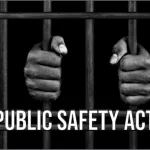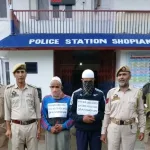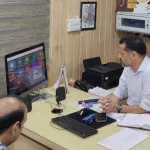Srinagar, April 02: Trauma care continues to remain affected in Kashmir as the designated trauma care centres face official neglect, which is hitting the patient care.
A few years back, the health department had designated trauma centres in many places, but the department failed to provide services and these trauma facilities remain on papers only.
One such facility was Community Health Centre-cum-Trauma Hospital in Pattan, Baramulla which is facing a shortage of specialist doctors and paramedical staff.
Locals of the area said earlier it was a Sub District Hospital and when it was shifted to a new place it was downgraded and the manpower was not recruited for the vital hospital.
“The health department has failed to post specialized doctors for the trauma hospital which took 16 years for its completion,” said Mudasir Ahmad, a patient from Pattan.
Although the trauma hospital has operation theaters but shortage of neurosurgeons and specialist doctors hampers their ability to handle emergencies effectively.
Locals said the facility was intended to treat road accident victims on Srinagar-Baramulla highway prone to accidents, but the lack of trauma services is putting lives at serious risk.
Officials said due to lack of doctors they are not able to run the trauma facilities the way it should, adding that they have written to the government about the need of manpower.
Another trauma centre was established in Watergam, Rafiabad but it also continues to face neglect and it has failed in managing injuries caused by road accidents.
Zahoor Ahmad of Watergam said the area has witnessed multiple casualties in recent past due to road accidents raising serious concerns over the lack of proper medical facilities at the trauma center, which is a crucial healthcare unit along the Baramulla-Kupwara Highway.
Residents recalled that the foundation stone for the facility was laid in 2014, and they had high hopes that it would help manage road traffic injuries on the highway.
“It brought hope for the people. We believed the hospital would bring a change but that never happened. Those who suffer road traffic injuries die on the way to hospital,” he said.
He said that residents are compelled to refer critical patients to Srinagar hospitals, which leads to delays in treatment and worsens patient outcomes.
The trauma center also faces a shortage of ambulances, essential medical instruments, and round-the-clock emergency services, which significantly affects patient care.
Another such facility was trauma hospital Ganderbal, situated on the Srinagar-Leh highway. The hospital was previously a sub-district hospital however upgraded as a trauma hospital.
A senior doctor posted at the hospital said the hospital has faced neglect over the years and failing to treat injuries caused due to road traffic accidents in the district as it faces shortage of infrastructure and required manpower for trauma care.
Last month, the J&K Govt. was informed that the Health Ministry didn’t approve the proposal for Trauma Hospital at Lawaypora and presently functions as a NTPHC. It was previously designated a trauma care unit.
“Trauma Hospital at Lawaypora Srinagar was conceptualized to strengthen trauma & accidental care along the National Highway. However, the said proposal was not approved by the Ministry of Health & Family Welfare, Govt. of India,” the Govt. was informed.
The govt. was informed that the hospital building at Lawaypora was initiated in 2006-07 under Capex with an estimated cost of Rs. 641.00 lakhs. Of this amount, Rs. 541.00 lakhs has been utilized, and the G+3 building structure was completed in 2014.
Pertinently, the trauma hospital requires specialized manpower like neurosurgeons, anesthetists, orthopedics and other allied support staff, besides high-end equipment and modular OTs, which cannot be made available at all places. “It is necessary to utilize and share resources of adjoining places where such facilities exist.”
However, an official of the Health and Medical Education Department said it plans to further upgrade trauma care services with the help of modern machinery.
“Within some time there will be more improvement. We will try to make these trauma institutions functional properly and for the best satisfaction of the public within the given resources,” he said.








